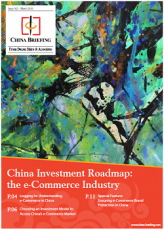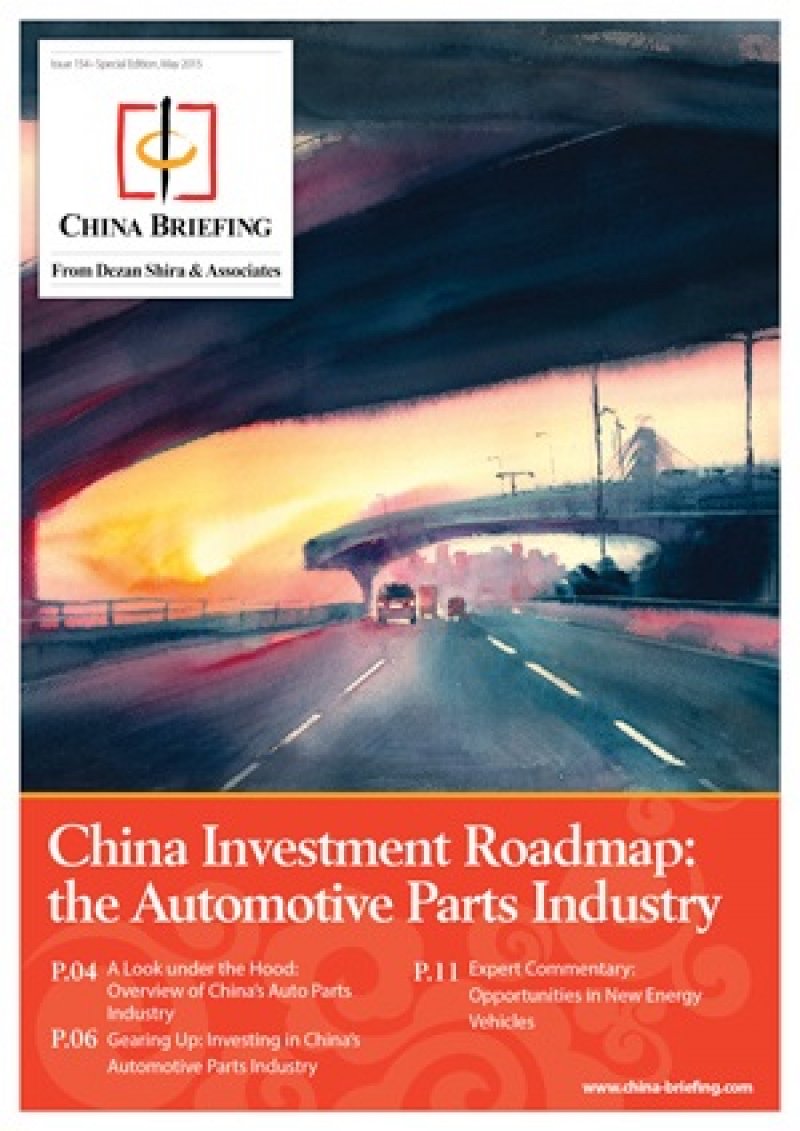Changing Course: e-Commerce and its Impact on the Automotive Aftermarket
The transformative effects of e-commerce and the opportunities it presents across various industries and markets have been well documented. For most companies, developing an e-commerce strategy is no longer merely a consideration or an experiment, but integral to their business. Compared to many other industries, however, the automotive aftermarket’s e-commerce activity is less prominent. This is largely due to the complex nature of the industry’s products, supply chains, and channel relationships. Innovative players who can overcome these challenges have the potential to capitalize on a growing but underdeveloped service that could disrupt the way this industry conducts business.
The State of Automotive Aftermarket e-Commerce
The automotive aftermarket supplies car owners and dealerships with a vast array of parts for vehicles needing repairs or upgrades, most of which are intricate and require expert knowledge to ensure proper functionality and public safety. The industry’s channel relationships have traditionally been dominated by original equipment manufacturers (OEMs) and automakers such as Toyota and Audi, which purchase parts from suppliers but limit their ability to sell directly to customers. The complexity of cars, their myriad parts, and the industry’s channel relationships present a structural challenge that greatly complicates the shift to e-commerce.
Do-it-yourself (DIY) consumers, who directly purchase parts and fix their vehicles themselves, are a steady source of business, but represent a relatively niche segment of the total market. As cars are such complex machines involving innumerable parts, most consumers seek the expertise of local garages or dealerships for repairs. Further, customers requiring parts are often shopping on short notice due to an unexpected car problem and expect same-day repairs to immediately get back on the road. This is both a challenge and opportunity in emerging markets in particular, where direct aftermarket sales are rapidly growing but largely unstructured with less developed distribution systems.
These obstacles explain why the automotive aftermarket has been slow to embrace e-commerce. Nevertheless, consumers are changing the ways they use their vehicles and purchase replacement parts. In the U.S., the average age of a vehicle has increased by 26 months over the past decade to reach 11.5 years. Owners are increasingly tinkering and repairing their cars instead of purchasing new ones, and accessing internet resources to do so. Although less than 10 percent of DIY customers complete their purchases online, half use the internet to research and begin the process. Consumers value the information and pricing transparency found on the internet, as mechanics and garages have long held a reputation of being opaque and wily in their pricing methods. Suppliers can increase consumer knowledge and confidence by promoting brand awareness on e-commerce platforms, and offering tutorials and instructional videos on their websites to explain how to use their products.
Combining online and offline operations through “brick-and-click” stores is another effective strategy to integrate a company’s products and services. Although the development of e-commerce platforms directly servicing customers presents many challenges, there is ample opportunity for growth in the sector for companies willing to embrace innovative and integrated approaches.
While direct sales to customers in the DIY market are increasing, the majority of sales occur in the “do-it-for-me” market (DIFM), where garages and service stations purchase parts for customers whose cars need repairs and upgrades. Most DIFM businesses that buy online do not choose their providers based on a particular feature of e-commerce; rather, they generally continue to purchase from the same distributors they have held relationships with for years, only on a different platform. However, DIY and DIFM merchandizing are increasingly coalescing into identical platforms, and those who manage to capture the lucrative DIFM market stand to reap the greatest profits. Many traditional suppliers such as Bosch are vying to become dominant players on the internet, while established e-commerce giants Amazon and eBay are also entering the industry. These companies aim to capitalize on industry transformations to cement themselves as the go-to providers for automotive aftermarket parts, offering cheaper prices and better service through scale and infrastructure.
![]() RELATED: Business Advisory Services from Dezan Shira & Associates
RELATED: Business Advisory Services from Dezan Shira & Associates
Effects on Supply Chains
As a consequence of the changing business and distribution models brought by e-commerce, the complex automotive aftermarket supply chain is also shifting gears. Traditionally, OEMs and dedicated aftermarket suppliers sell parts to national and regional distribution centers, which in turn sell to local garages and service centers. OEMs are the original producers of car parts – while generally more expensive, they provide consumers with quality assurance and guaranteed compatibility. On the other hand, aftermarket parts are generally cheaper, and offer a greater range of quality – sometimes superior to the original.
Increasing consolidation among suppliers in the aftermarket industry and the ability to sell directly to customers are intensifying competition with OEMs. Aftermarket suppliers are progressively bypassing regional distribution centers and directly shipping to DIY and DIFM customers. However, this presents many logistical challenges given the need for a huge array of parts and rapid delivery times. Over the past decade, the number of parts per car has increased by over 50 percent to reach 10 thousand. The sheer variety of parts – and the often unpredictable nature of what will be in demand – presents considerable logistical demands for companies developing e-commerce platforms and directly servicing customers.
With fiercer competition from aftermarket suppliers providing direct sales, OEMs are facing deepening pressure to decrease their prices. In response, they are shifting from a buyout model where they sell parts to regional distributors to a self-run model where they directly operate distribution centers, often disrupting established business relationships in the process.
Despite this competition, aftermarket suppliers and OEMs must work to maintain healthy relationships. Many aftermarket suppliers rely on partnerships with OEMs, who often contract suppliers to produce parts before attaching their brands to the finished products. Moreover, OEMs maintain relationships with suppliers to access their latest technology and receive better pricing. However, the larger size of OEMs allows them to stop buying from suppliers as punishment for bypassing them with direct sales. To avoid this, suppliers are increasingly differentiating the product lines that go to OEMs and those destined for direct sales. Aftermarket suppliers and OEMs must thus walk a fine line between competition and collaboration as supply chains and business practices change and further complicate complex channel relationships.
 RELATED: Logging In: Understanding e-Commerce in China
RELATED: Logging In: Understanding e-Commerce in China
Future Trends
When engaging in e-commerce, the biggest potential room for growth takes place in emerging markets. China, for instance, surpassed the U.S. in 2009 to become the world’s largest market for new auto sales. Because China’s emergence as a large scale automotive market is a relatively recent phenomenon, its complementary aftermarket services, such as garages and service stations, are undeveloped. Most auto servicing in China is done by “4S” stores, which are controlled by OEMs, in addition to informal independent garages. However, there is ample room for growth of chain service stations and e-commerce sellers. China has a highly developed e-commerce infrastructure and consumers who enjoy using such platforms. Bosch made waves in the industry with its highly successful entry into China’s e-commerce market, raking in US$9 million in profits in its first year on the Chinese website Tmall. Many companies are keen to follow Bosch’s lead, and opportunities abound in other emerging markets such as India as they develop their own e-commerce sectors.
In addition to the rising prominence of emerging markets, technological change is also increasing the importance of e-commerce in the automotive aftermarket industry. Connected cars and the Internet of Things could transform the frequency at which parts are purchased and how they are accessed. Maintenance issues could be detected before parts fail entirely, identifying the need for replacements that otherwise may be overlooked by car owners and mechanics. Drivers could then automatically be connected to e-commerce platforms and garages for re-ordering and servicing.
Auto companies are developing their own proprietary systems to address this need, while service aggregators such as OpenBay and RepairPal are creating similar apps. These systems will likely benefit the automotive aftermarket industry as owners become more aware of car maintenance beyond simple oil and tire changes.
The emergence of 3D printing could similarly disrupt the industry by providing easily accessible parts, regardless of their level of obscurity. If properly integrated, 3D printing has the potential to benefit parts producers with cheap, fast, and localized production, resolving many of the logistical issues that the automotive aftermarket industry faces with e-commerce.
Due to its complex products and supply chains, the automotive aftermarket industry’s foray into e-commerce has been slower and less developed than many other industries. As engagement with e-commerce increasingly becomes a necessity to access customers and compete with rival companies, automotive aftermarket enterprises are gradually transforming their business models in response. Doing so requires comprehensive engagement with customers, thorough management of supply chains, and careful handling of relationships with competitors and collaborators. While not an easy task, successful capitalization on industry transformations presents tantalizing rewards for the growing automotive aftermarket industry.
|
About Emerging Strategy Emerging Strategy is the leading provider of customized market intelligence in the education industry. Their work in this industry focuses on bringing cutting-edge content, technologies, language learning, skill training and assessments in front of institutional and retail customers. For more information on Emerging Strategy and our services, please contact us at info@emerging-strategy.com. |
 China Investment Roadmap: the e-Commerce Industry
China Investment Roadmap: the e-Commerce Industry
In this edition of China Briefing magazine, we present a roadmap for investing in China’s e-commerce industry. We provide a consumer analysis of the Chinese market, take a look at the main industry players, and examine the various investment models that are available to foreign companies. Finally, we discuss one of the most crucial due diligence issues that underpins e-commerce in China: ensuring brand protection.
 Selling, Sourcing and E-Commerce in China 2016 (First Edition)
Selling, Sourcing and E-Commerce in China 2016 (First Edition)
This guide, produced in collaboration with the experts at Dezan Shira & Associates, provides a comprehensive analysis of all these aspects of commerce in China. It discusses how foreign companies can best go about sourcing products from China; how foreign retailers can set up operations on the ground to sell directly to the country’s massive consumer class; and finally details how foreign enterprises can access China’s lucrative yet ostensibly complex e-commerce market.
China Investment Roadmap: the Automotive Parts Industry
This issue of China Briefing presents a roadmap for investing in China’s automotive industry. We begin by providing an overview of the industry, and then take a comprehensive look at key foreign investment considerations, including investment restrictions, tax incentives and manufacturing requirements. Finally, we discuss foreign investment opportunities in a part of the industry that receives substantial government support: new energy vehicles.
- Previous Article Chinas Freihandelszonen: Marktzugang, Steuersysteme und Registrierungsprozesse, Teil 2
- Next Article China Investment Roadmap: the Elderly Care Industry – New Issue of China Briefing Magazine

















 By
By 








